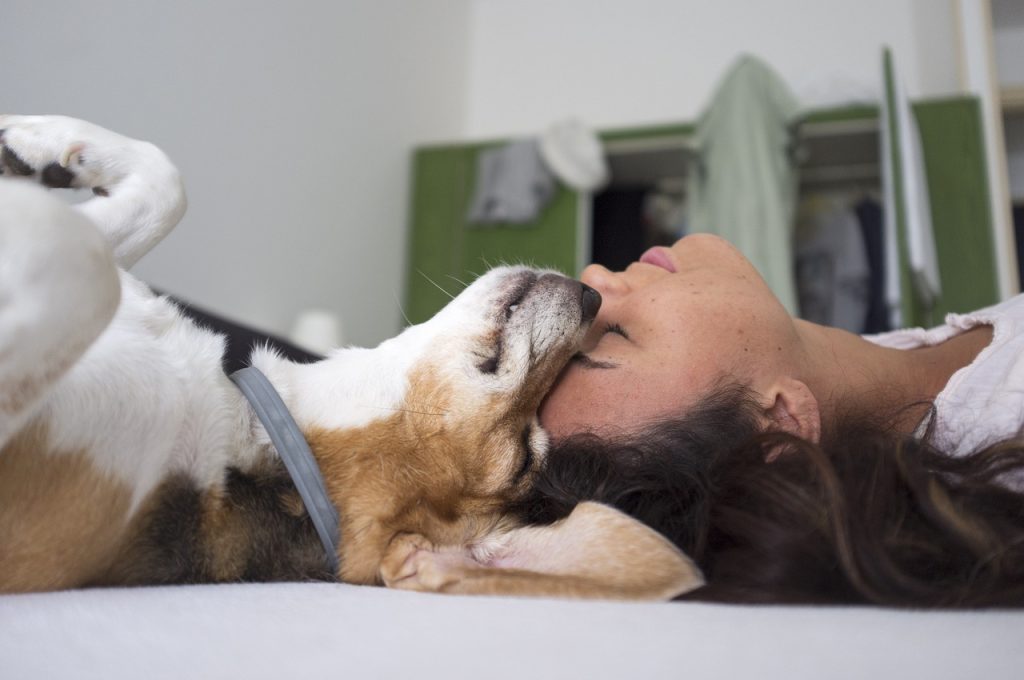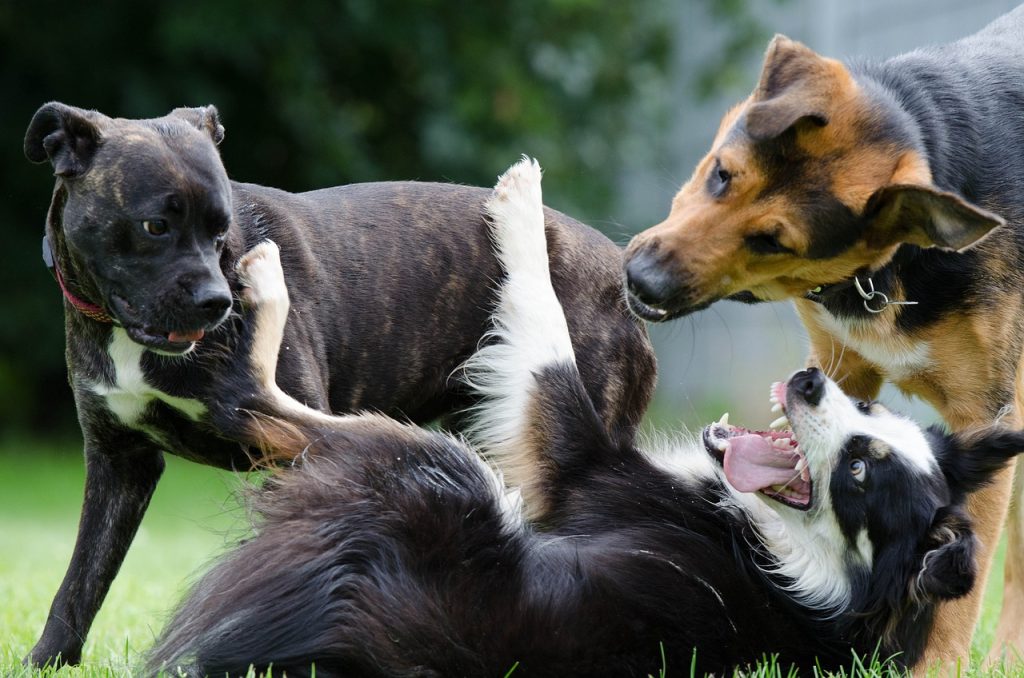
In the intricate dance of human-canine companionship, understanding your dog’s body language serves as a vital bridge for effective communication and harmonious coexistence. This comprehensive guide delves into the nuances of canine communication, offering valuable insights into interpreting your dog’s cues and emotions.
How Dogs Communicate
Dogs employ a rich repertoire of communication methods, ranging from visual cues and vocalizations to body postures. Each element offers a unique glimpse into the intricate tapestry of your dog’s thoughts and feelings.
Visual cues
Your dog’s body is a canvas of communication, with every movement and expression conveying a story of their inner world. Tail wagging, ear positioning, and facial expressions are among the primary modes through which dogs express their emotions and intentions, offering valuable insights into their mood and state of mind.
Tail wagging is perhaps one of the most recognizable and commonly observed visual cues in dogs. While often associated with happiness and excitement, the interpretation of a wagging tail is far more nuanced. The speed, height, and direction of the wag can vary significantly, with rapid, high-positioned wagging indicating heightened arousal or agitation, while slower, lower-positioned wagging may suggest a more relaxed or cautious demeanor. A tucked tail or stiff, upright tail can signal fear, anxiety, or even aggression, underscoring the importance of considering the context in which the tail wag occurs.

Ear positioning is another key indicator of your dog’s emotional state. Perked ears denote attentiveness and alertness, signaling that your dog is engaged and ready to respond to stimuli in their environment. Flattened or pinned-back ears may indicate fear, submission, or discomfort, reflecting a desire to avoid confrontation or appease perceived threats. By paying close attention to your dog’s ear movements, you can gain valuable insights into their level of comfort and confidence in a given situation.
Facial expressions provide yet another layer of communication in dogs, offering a window into their emotional landscape. A relaxed, open-mouthed expression with soft eyes and a slightly upturned mouth suggests contentment and relaxation, indicating that your dog feels safe and at ease in their environment. Tense facial muscles, narrowed eyes, and bared teeth may signal discomfort, fear, or aggression, serving as warning signs of potential conflict or distress. Understanding the subtleties of your dog’s facial expressions allows you to gauge their emotional well-being and respond appropriately to their needs.
In essence, your dog’s body language is a rich tapestry of communication, with tail wagging, ear positioning, and facial expressions painting a vivid picture of their emotions and intentions. By honing your ability to interpret these visual cues, you can deepen your bond with your furry companion and ensure that their needs are met with understanding and empathy.
Vocalizations
Dogs are vocal creatures, using a diverse range of sounds to communicate their emotions, needs, and intentions. Barks, growls, whimpers, and howls are just a few of the vocalizations that dogs employ to express themselves. Each vocalization carries its own distinct message, providing valuable insight into your dog’s emotional state and current circumstances.

Barks are perhaps the most common and versatile vocalization used by dogs. They can range from short, sharp barks of excitement or alertness to prolonged, repetitive barking indicating distress or frustration. Excited barks often accompany moments of play, greeting, or anticipation of something enjoyable, while alert barks may serve as a warning of potential danger or unfamiliar stimuli. Additionally, dogs may bark to seek attention or communicate their desire for food, play, or interaction with their human companions.
Growls, on the other hand, are often associated with feelings of discomfort, warning, or aggression. A low, rumbling growl may signify that a dog is feeling threatened, fearful, or defensive, signaling a desire to be left alone or a warning to back off. In some cases, growling can also indicate pain or discomfort, especially if accompanied by other signs of distress such as tense body posture or avoidance behaviors. It’s essential to pay close attention to the context in which growling occurs, as it can provide valuable clues about the underlying cause and appropriate response.
Whimpers and whines are softer vocalizations that dogs use to communicate feelings of anxiety, insecurity, or distress. These plaintive sounds may indicate that a dog is feeling scared, lonely, or in need of comfort or reassurance. Whimpers can also serve as a form of communication between dogs, signaling submission or a plea for attention from their human or canine companions. Understanding the context in which whimpers occur, such as during separation from their owner or in response to a stressful situation, can help you provide the appropriate support and comfort to your dog.

Howling is another vocalization commonly associated with dogs, often evoking images of wolves communicating across vast distances. While domestic dogs may not need to communicate over long distances like their wild counterparts, howling can still serve as a form of communication between dogs or as a response to certain stimuli, such as sirens or other loud noises. Howling may also occur in response to separation anxiety or as a way for a dog to express loneliness or boredom. While some dogs may howl more frequently than others, it’s essential to consider the individual temperament and personality of your dog when interpreting their vocalizations.
Overall, understanding your dog’s vocalizations is an essential aspect of effective communication and can provide valuable insights into their emotions, needs, and experiences. By paying attention to the context, frequency, and intensity of your dog’s vocalizations, you can better understand their communication style and respond appropriately with care and empathy.
Body postures
The way a dog carries itself serves as a window into its emotional world, offering valuable clues about its mood, intentions, and overall well-being. By paying close attention to your dog’s body language, you can gain insights into their emotional state and respond appropriately to their needs.

A relaxed, wiggly body is a telltale sign of a happy and contented dog. When your dog is feeling at ease and comfortable in their environment, they may exhibit loose, fluid movements and a wagging tail. Their muscles are relaxed, and they may even display playful behaviors such as rolling over or engaging in gentle play bows. This relaxed body posture reflects a sense of security and happiness, indicating that your dog feels safe and cared for.

Stiffness and rigidity in your dog’s body language may signal feelings of fear, tension, or even aggression. When a dog feels threatened or uncomfortable, they may tense their muscles and adopt a rigid posture, with their body held stiffly and their movements constrained. Raised hackles, flattened ears, and a stiffly held tail are common indicators of heightened arousal or distress. In some cases, a dog may resort to aggressive postures, such as standing tall with a forward-leaning stance and baring their teeth, as a means of asserting dominance or defending themselves.
A dog’s posture can convey information about their social status within a group. Dominant dogs often display confident, assertive stances, standing tall with their head held high and their chest puffed out. They may also engage in assertive behaviors such as mounting or leaning over other dogs as a means of establishing their status within the pack. In contrast, submissive dogs may adopt more deferential postures, such as crouching low to the ground, tucking their tail between their legs, and averting their gaze. These submissive gestures are a way for dogs to demonstrate respect and deference to more dominant members of their social group.

Understanding your dog’s body postures is essential for effective communication and relationship-building. By recognizing the subtle cues conveyed through their body language, you can better interpret their emotions and respond in ways that promote their comfort, security, and well-being. By fostering a deeper understanding of your dog’s body language, you can strengthen the bond between you and your furry companion and ensure a lifetime of mutual trust and companionship.
Interpreting Canine Body Language

Mastering the art of interpreting your dog’s body language empowers you to respond effectively to their needs and emotions, fostering a deeper understanding and stronger bond.
Signs of happiness and contentment
A happy dog exudes positivity, with a loose, relaxed body, bright eyes, and a gently wagging tail. They may also engage in playful behaviors and seek out affectionate interactions with their human companions.
Signs of fear and anxiety
Fearful or anxious dogs often exhibit submissive body language, such as a lowered body posture, tucked tail, and flattened ears. Additionally, they may display signs of stress such as panting, pacing, or avoidance behaviors.
Signs of aggression and discomfort
Aggressive behavior in dogs typically manifests as stiff, upright postures, raised hackles, and direct, intense eye contact. Growling, snarling, and showing teeth are common warning signs of aggression, indicating a dog’s readiness to defend itself or establish dominance.
Common Misinterpretations
Despite their expressive nature, dogs’ body language can sometimes be misinterpreted, leading to misunderstandings and potential conflicts.
Misunderstood signals
One of the most prevalent misconceptions is assuming that a wagging tail always denotes happiness. While this is often the case, tail wagging can also signify excitement, nervousness, or even aggression, depending on the context and accompanying body language.
Cultural differences may also influence how people interpret dog behavior, leading to misunderstandings between dogs and their human caregivers.
The Importance of Children and Dogs

Interactions between children and dogs require careful supervision and understanding of both parties’ body language. Educating children on how to interpret and respect a dog’s signals can prevent accidents and foster positive relationships.
it’s crucial for parents and guardians to educate children on how to interact safely and respectfully with dogs. Teaching children to recognize and understand a dog’s body language signals, such as signs of fear, anxiety, or aggression, can significantly reduce the risk of accidents or misunderstandings. Encouraging children to approach dogs calmly, ask for permission before petting, and avoid sudden movements can help foster positive relationships and mutual respect between children and dogs.
Tips for Effective Communication
Enhance your communication with your dog by sharpening your observational skills, building trust, and practicing patience.
Observational skills
Pay close attention to your dog’s body language in various situations, noting subtle cues such as ear flicks, lip licking, and changes in posture. The more attuned you become to your dog’s signals, the better equipped you’ll be to understand their needs and respond appropriately.
Building trust
Create a positive and supportive environment where your dog feels safe expressing themselves without fear of punishment or reprimand. Use positive reinforcement techniques, such as treats, praise, and affection, to reinforce desired behaviors and strengthen your bond.
Practicing patience
Effective communication with your dog is an ongoing process that requires patience and understanding. Be patient as you learn to interpret and respond to your dog’s body language, and remember that building a strong bond takes time and effort.
Understanding your dog’s body language is a cornerstone of effective communication and harmonious coexistence. By paying attention to visual cues, vocalizations, and body postures, you can gain valuable insights into your dog’s emotions and needs, fostering a deeper understanding and stronger bond. Armed with this knowledge, you’ll be better equipped to navigate your interactions with your furry friend and ensure a lifetime of love, trust, and companionship.